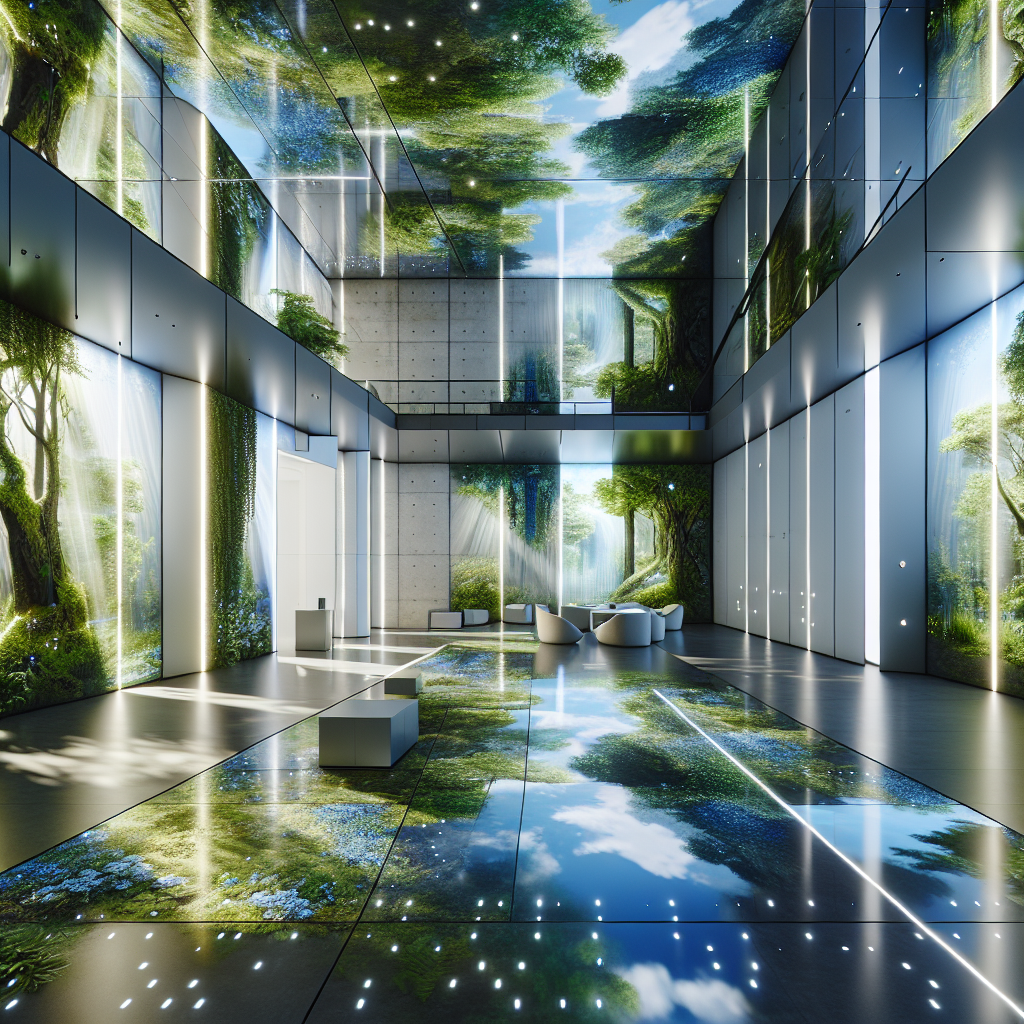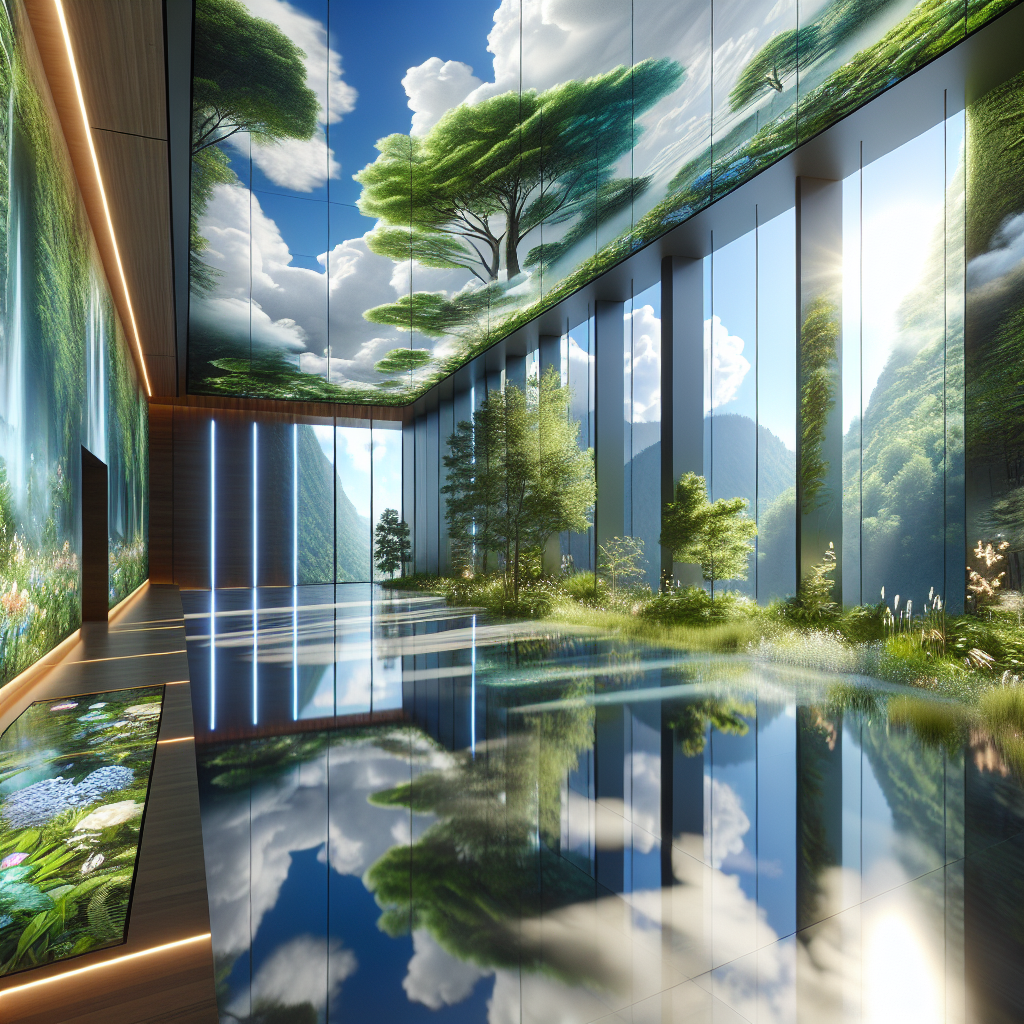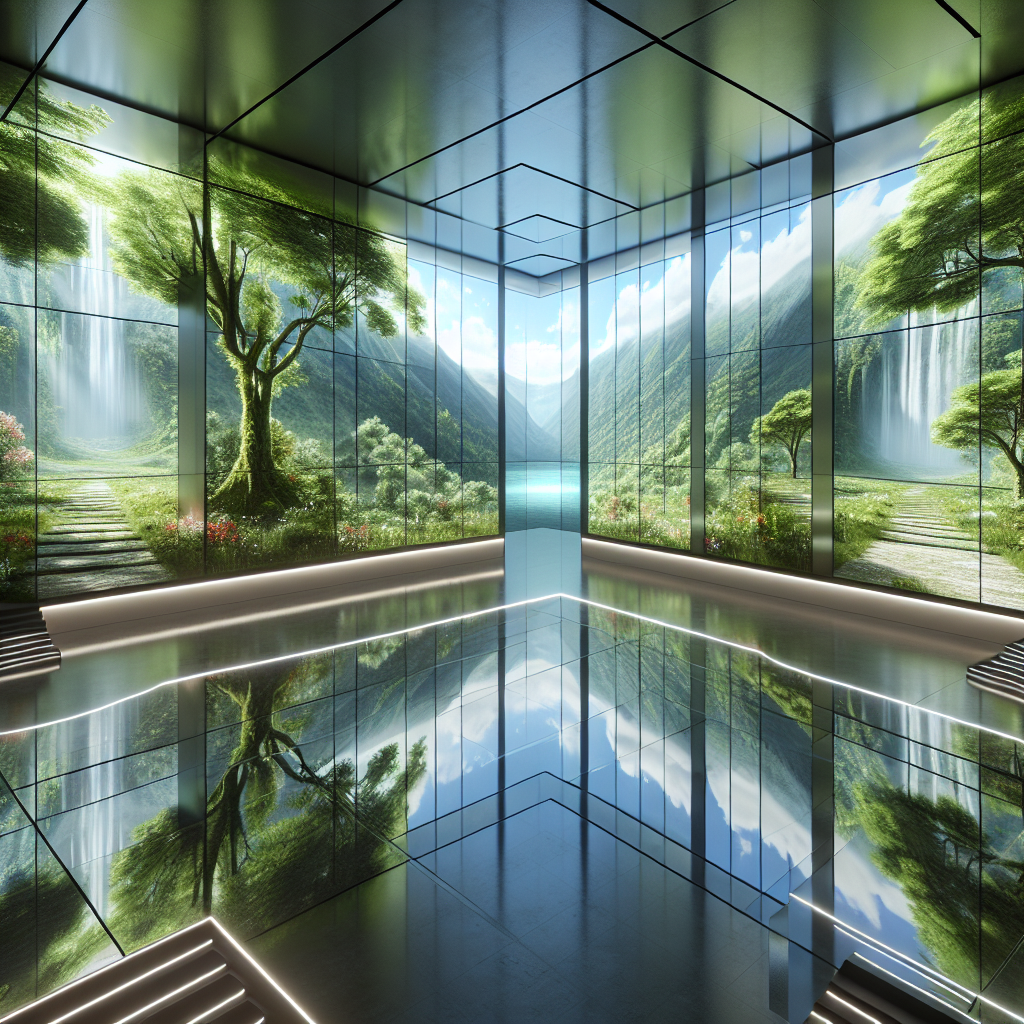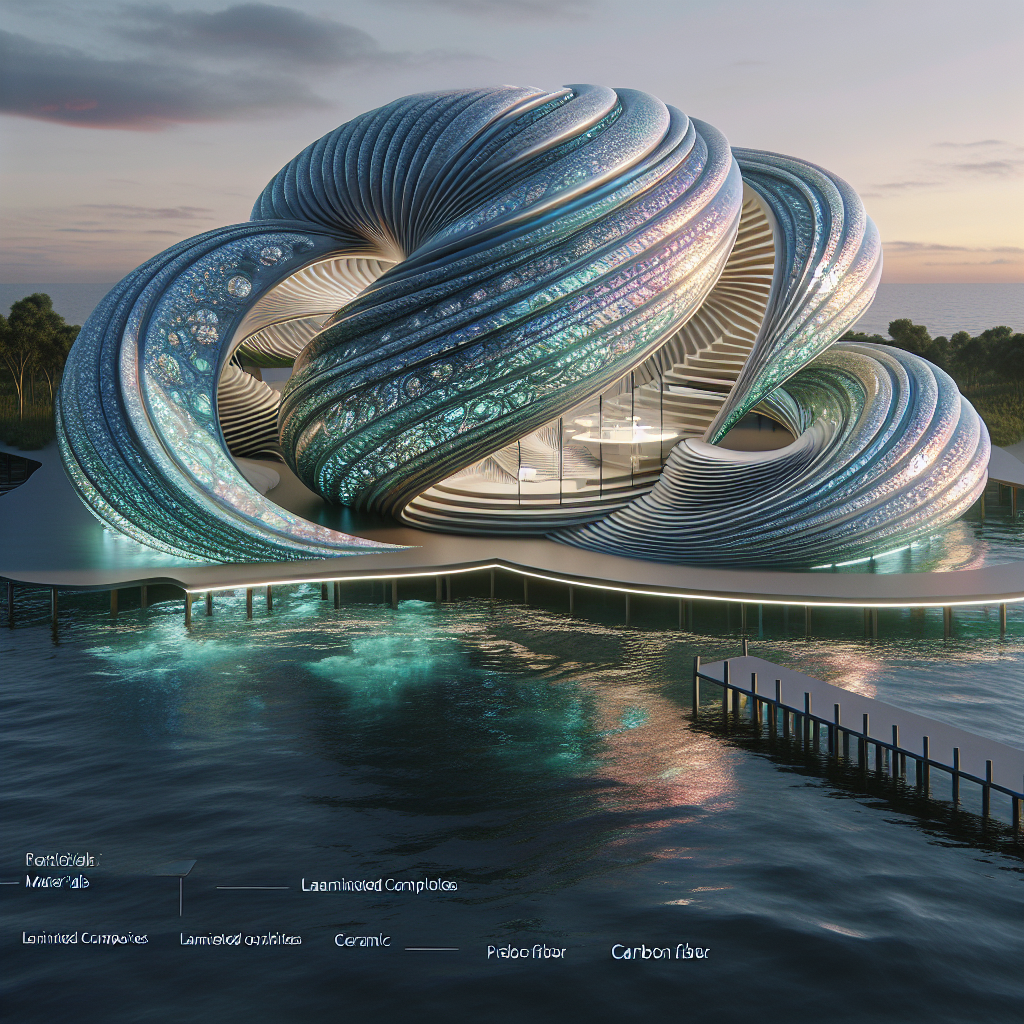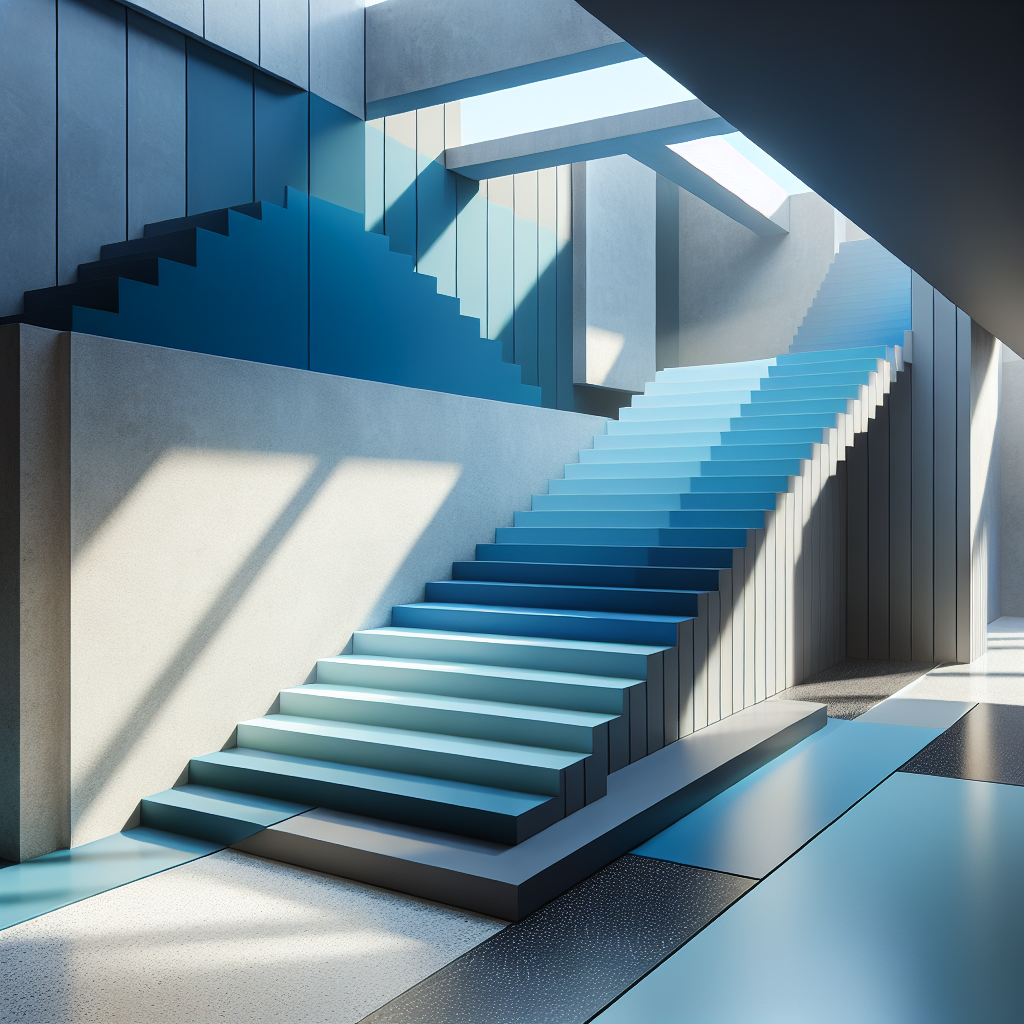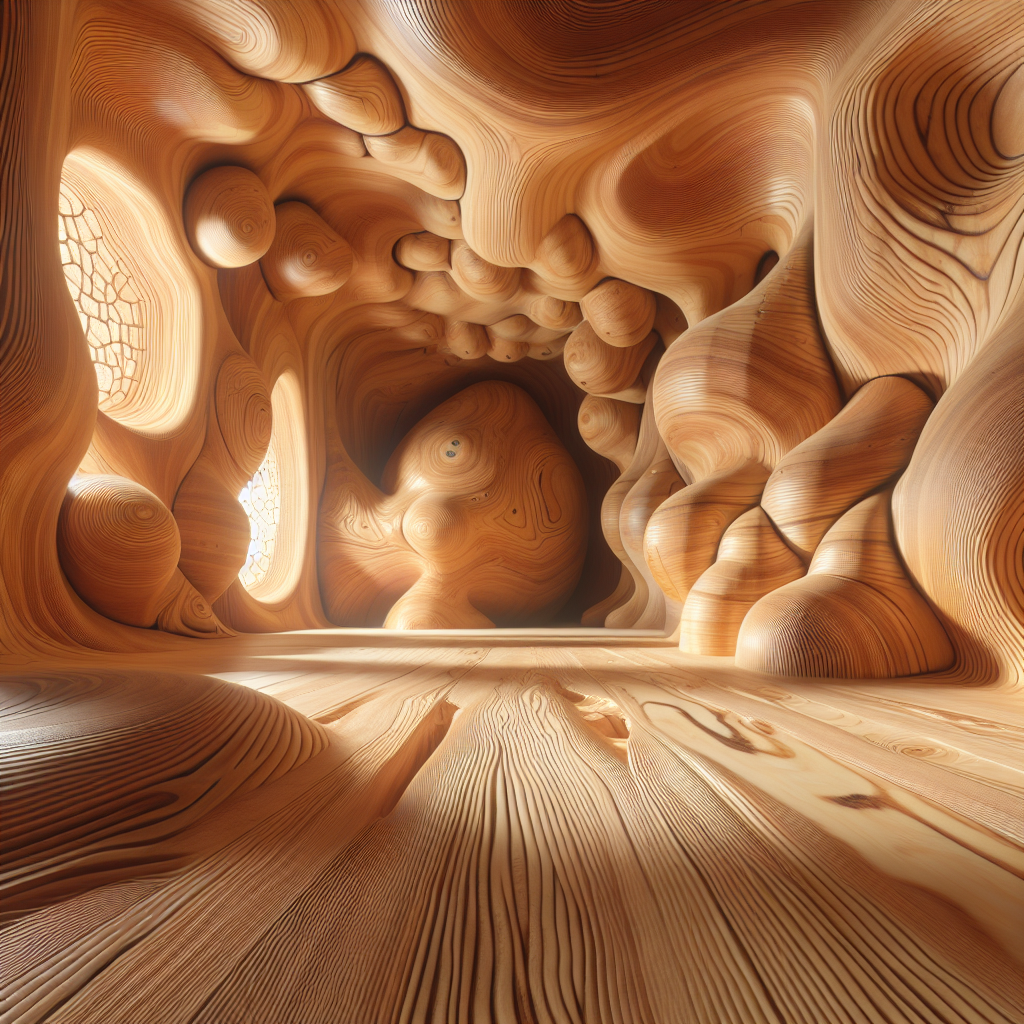Biophilic illusions digital: projections of forests for windowless interiors
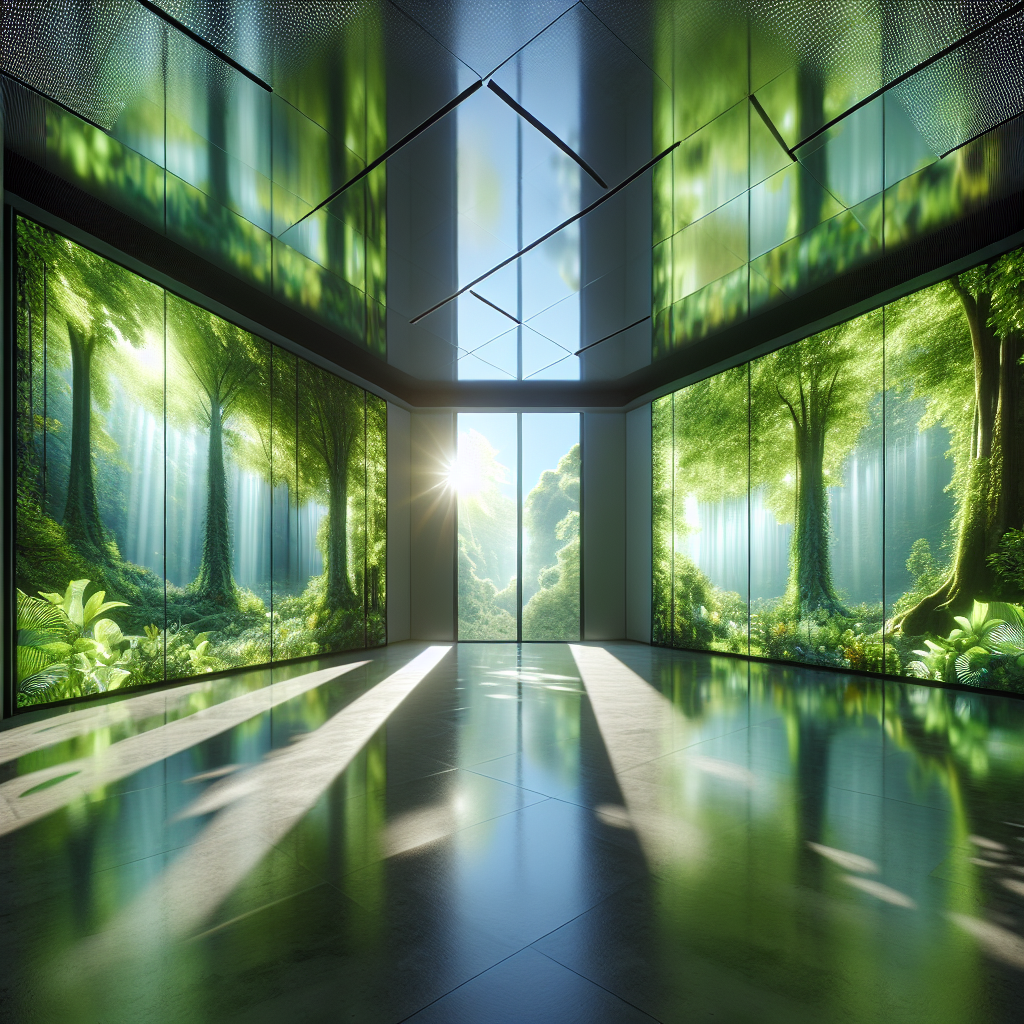
In an era where urban density increasingly dictates the shape of our built environments, architects and designers are reimagining how to restore our connection to nature in spaces where windows and daylight are absent. One of the most intriguing innovations is the rise of biophilic illusions digital—immersive projections of forests, skies, and landscapes that transform windowless interiors into sensorial sanctuaries. This fusion of biophilic design principles with cutting-edge digital technology is not merely decorative; it is reshaping how we perceive, inhabit, and emotionally respond to enclosed spaces.
The Rise of Biophilic Illusions in Design
The term biophilic design refers to the integration of natural elements into architecture to improve human well-being. While green walls, indoor gardens, and timber finishes have become staples of contemporary interiors, the digital extension of biophilia is gaining momentum. By projecting hyperrealistic forest canopies, flowing rivers, or shifting skies onto walls and ceilings, designers can simulate the presence of nature in spaces that would otherwise feel sterile or claustrophobic.
This approach is particularly relevant in urban contexts where access to daylight is limited. From subterranean offices to healthcare facilities, digital biophilic illusions offer a way to restore a sense of openness and tranquility. Unlike static murals or printed wallpapers, these projections are dynamic, responding to circadian rhythms, seasonal changes, or even the mood of the occupants.
Technology Meets Psychology
The psychological benefits of nature exposure are well-documented. Studies published in the Journal of Environmental Psychology have shown that even simulated natural environments can reduce stress, enhance cognitive performance, and improve overall mood. Digital projections leverage this by creating immersive, multisensory experiences that engage not only the eye but also the body’s perception of space.
Advanced systems now integrate motion sensors and AI-driven algorithms, allowing the projected forest to “respond” to human presence. Imagine walking into a windowless lobby where the canopy above rustles as if stirred by your arrival, or a hospital recovery room where the projected light subtly shifts to mirror the natural daylight cycle outside. This aligns with the broader movement toward biophilic design and its impact on human health, reinforcing the human need for connection with nature—even when nature itself is digitally mediated.
Case Studies: From Corporate Interiors to Healing Spaces
Several pioneering projects illustrate the potential of biophilic illusions. In Tokyo, a co-working hub designed for creative professionals uses panoramic forest projections across entire walls, combined with subtle ambient soundscapes of birdsong and flowing water. The result is a workspace that feels expansive, meditative, and energizing despite being located in a basement.
Healthcare environments are another fertile ground for this innovation. A hospital in Scandinavia recently introduced digital skylights projecting moving clouds and treetops in its intensive care units. Patients reported lower anxiety levels and improved sleep quality, echoing findings from environmental psychology that suggest even simulated exposure to nature can accelerate recovery.
Luxury hospitality has also embraced the trend. Boutique hotels in dense urban districts now use immersive projections to transform windowless spa suites into digital rainforests, offering guests a sense of retreat without leaving the city. These experiences not only enhance well-being but also serve as a differentiating factor in an increasingly competitive market.
Design Language: The Aesthetics of Digital Nature
The visual vocabulary of biophilic illusions is evolving rapidly. Early iterations often relied on static imagery, but today’s systems employ ultra-high-definition projection mapping and LED panels to create fluid, layered environments. The aesthetic can range from hyperrealistic forests with dew-laden leaves to more abstract interpretations—like slow-shifting gradients of green and blue that evoke the essence of a woodland without literal representation.
Incorporating these illusions requires careful architectural planning. Surfaces must be optimized for projection, acoustics calibrated to avoid echo, and lighting designed to complement rather than compete with the digital content. When executed well, the effect is seamless: a wall dissolves into a forest edge, a ceiling opens into a canopy, and the boundaries of the room blur into something larger, softer, and more humane.
Integration with Broader Design Trends
The rise of digital biophilia dovetails with other architectural movements. The push toward virtual reality in architecture has familiarized designers with immersive technologies, while the growing emphasis on green architecture underscores the importance of nature in built environments. Together, these trends point toward a future where digital and organic strategies are not opposites but allies.
Moreover, as cities pursue net-zero and circular economy goals, digital projections offer a low-resource alternative to physically replicating nature indoors. Instead of importing tons of soil, water, and live plants into challenging environments, designers can create atmospheres of greenery through light and sound—minimizing maintenance while maximizing psychological impact.
Challenges and Critiques
Despite its promise, the concept of biophilic illusions is not without critique. Some argue that digital nature is a poor substitute for the real thing, potentially creating a false sense of connection. Others raise concerns about energy consumption, particularly in large-scale installations. Yet advancements in energy-efficient LED and projection technologies are addressing these concerns, making the systems increasingly sustainable.
The deeper question is philosophical: can a projection of a forest truly fulfill our innate need for nature, or does it risk commodifying the very essence of the natural world? For many designers, the answer lies in balance. Digital illusions are not meant to replace real greenery but to supplement it in spaces where access to daylight and vegetation is impossible.
The Future of Biophilic Illusions
Looking ahead, the convergence of AI, interactive media, and sensory design will likely make biophilic illusions even more sophisticated. Imagine projections that adapt in real time to air quality, temperature, or even the emotional state of occupants, creating environments that are both responsive and restorative. This aligns with the broader trajectory of AI in architecture, where spaces are increasingly designed to adapt to human needs.
For architects and designers, the opportunity lies in crafting experiences that go beyond spectacle. The most compelling biophilic illusions will not simply mimic nature but reinterpret it—offering poetic, multisensory environments that resonate with the human psyche while respecting the constraints of contemporary urban life.
Conclusion: Designing for Connection in Windowless Worlds
The rise of biophilic illusions digital marks a pivotal moment in design history. As our cities grow denser and our interiors more enclosed, the need for connection to nature becomes ever more urgent. By merging technology with biophilic principles, architects are not only solving practical challenges of windowless spaces but also redefining what it means to design for human well-being. These digital forests, skies, and landscapes remind us that even in the most artificial environments, the human desire for nature remains unshakable—and design has the power to meet it in profoundly imaginative ways.
